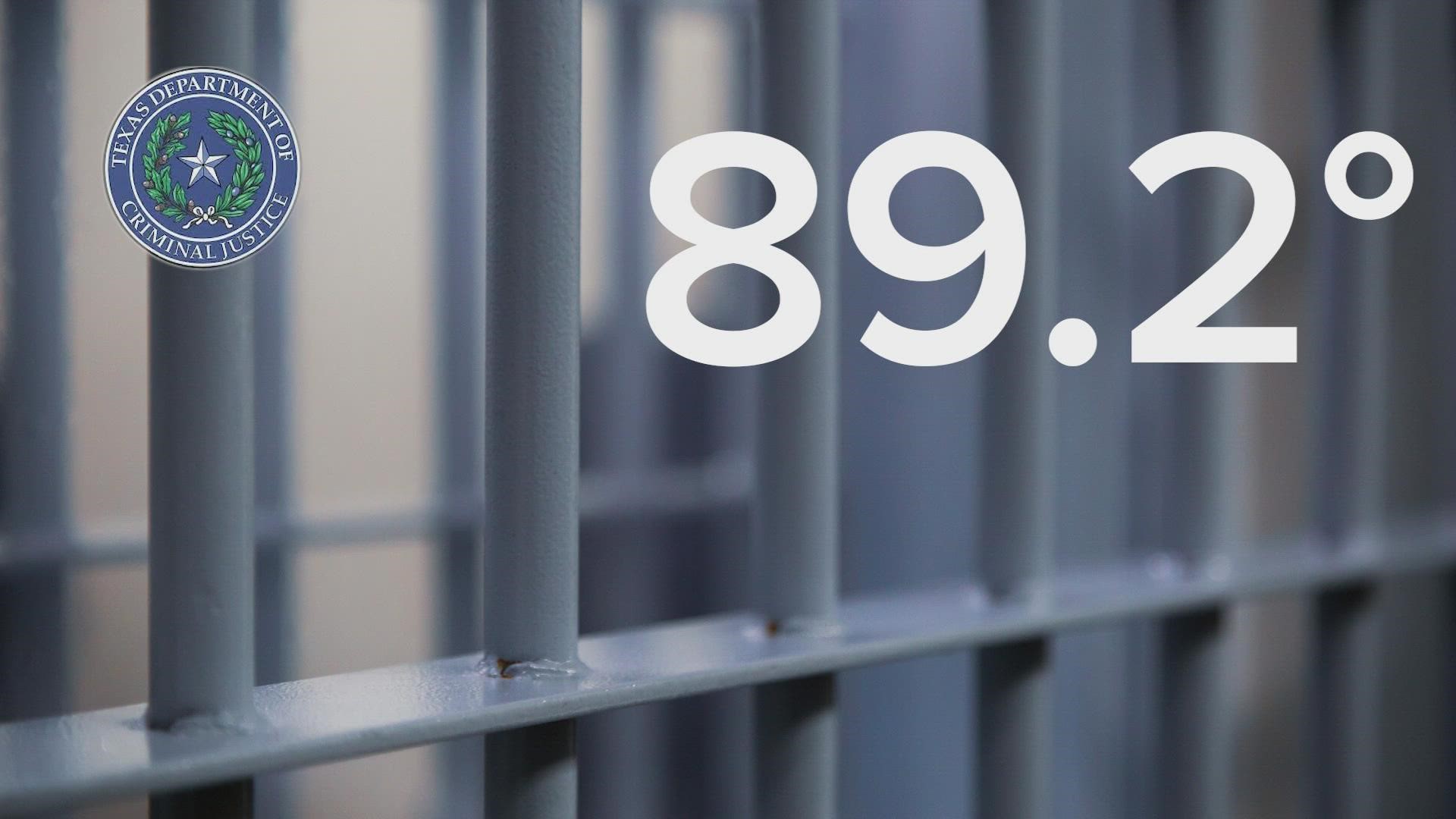TEXAS, USA — While seemingly all parts of Texas deal with a scorching hot summer, the state's prison system continues to have issues giving inmates and employees consistent access to air conditioning.
Temperatures inside Texas prisons regularly reach 110 degrees and topped out at 149 in at least one unit, according to a July study from the Texas A&M University Hazard Reduction & Recovery Center.
However, according to the Texas Department of Criminal Justice (TDCJ), the agency said the average temperature of unit housing areas that do not have air conditioning in the month of June was 89.2 degrees. It also said the average for the first 11 days of July was 91.4 degrees. This is based on temperature taken in consistent sample areas from each unit, according to TDCJ.
Texas is one of at least 13 states that does not have universal air-conditioning in its state prisons. According to a risk management training article from TDCJ, someone can begin to feel the impact of heat exhaustion as low as 80 degrees. It also added the risk for heat stroke starts at 91 degrees.
The issue of how hot it can and does get in Texas jails has been an ongoing issue for years. In 2017, as part of a court order, Texas submitted a plan to move about 1,000 medically-sensitive inmates from the Pack Unit southeast of College Station, which is not air-conditioned, to other state jails and prisons that do have air conditioning. The plan came after a federal judge ordered air conditioning for the inmates in a scathing ruling against the Texas Department of Criminal Justice in July.
At least 23 documented heat-related deaths of incarcerated people have also been recorded by the TDCJ since 1998, according to the Texas A&M study.
It wasn't until 20 years later that policy change related to heat came into the fold. In 2018, TDCJ mediated 10 lawsuits connected to heat issues and air-conditioning in its prisons. The agency would be legally required to put vulnerable incarcerated people in air-conditioned facilities. TDCJ also updated its heat mitigation policies.
As a part of this mediation, TDCJ implemented other changes as well for all inmates that involved creating cooled areas, providing water and ice, implementing additional showers when possible, allowing incarcerated people to wear cooler clothing options at times, and allowing the purchase of cooling items from the prison commissary, according to the Texas A&M study.
Since then, TDCJ said revisions were made on May 8, 2020, under the "Excessive and Extreme Temperature Conditions" category. Primary changes included adding language clarifying notification procedures once an offender is identified as at-risk. It also added language regarding offender access to respite areas and proper designation of the respite areas and the importance of prioritizing maintenance work orders to keep air conditioning units, shower temperatures, fans, ice machines, and other vital areas functional during excessive heat conditions. This revision codified processes that were already in place, according to TDCJ.
Of the state's nearly 100 prison facilities, 70% do not have air-conditioning, according to a 2021 Texas Tribune article.
The Texas A&M University Hazard Reduction & Recovery Center study looked at 309 surveys, which were distributed by the Texas Prisons Community Advocates to incarcerated people in 57 TDCJ units between October 2018 and December 2020.
The subjects covered in the surveys relate to:
- Experience with heat-related illness
- Experiences with heat restrictions.
- Knowledge of heat-related deaths
- The provision of resources (water, cups, ice)
- Access to and experience with showers
- Access to and experience with respite areas
- Access to and conditions of fans and other infrastructure
- Work-related experiences with heat
- Accessibility and availability of cooling commissary items
- Filing grievances
To read more about this study, click here.

